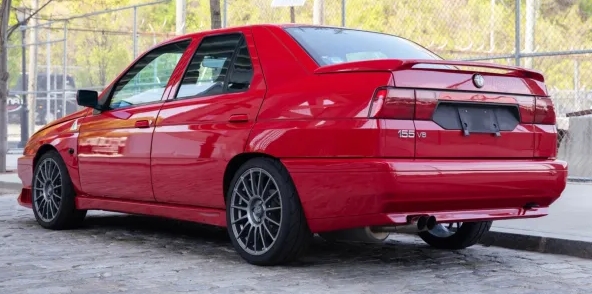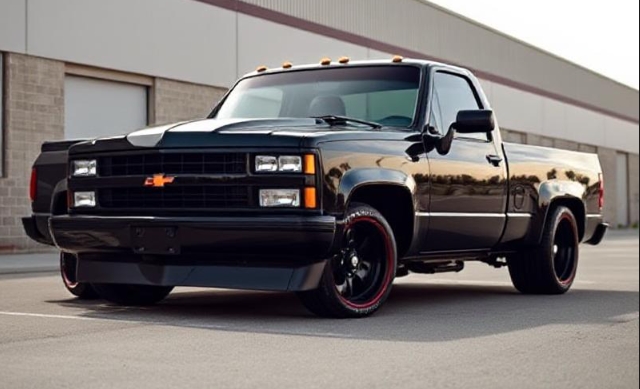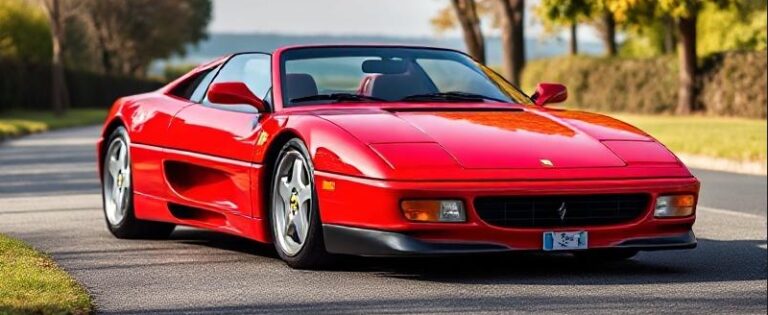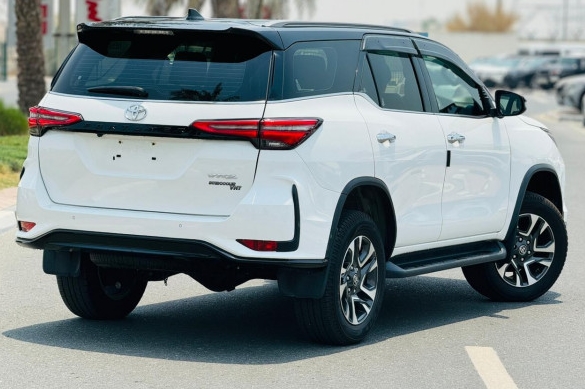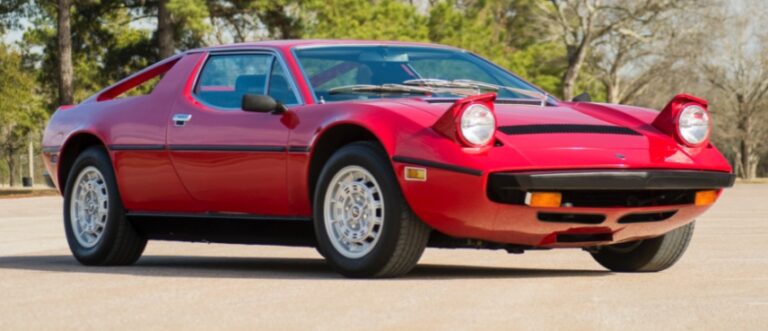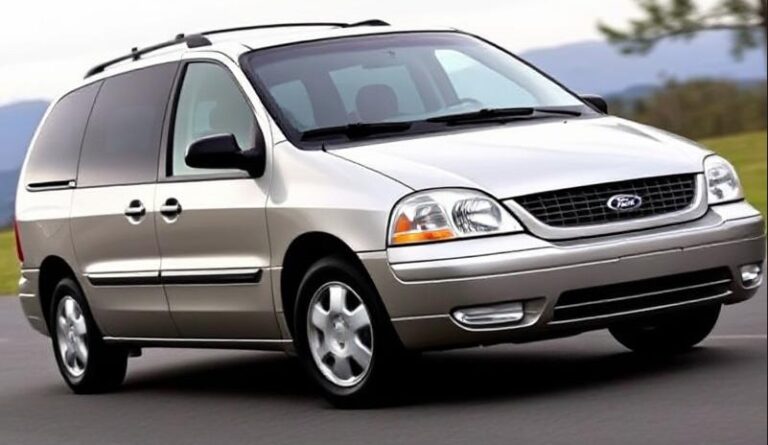The Evolution of the Alfa Romeo 155 and 156
In the grand and often turbulent history of Alfa Romeo, few periods encapsulate the brand’s struggle and subsequent renaissance as perfectly as the era of the 155 and its successor, the 156. These two compact executive sedans, born from different philosophies under Fiat’s ownership, tell a compelling story of adaptation, motorsport glory, and a triumphant return to stylistic excellence. They were not merely successive models; they were distinct chapters in Alfa Romeo’s fight for identity at the dawn of the modern automotive age.
The Alfa Romeo 155 (1992-1998): The Controversial Competitor
The arrival of the Alfa Romeo 155 in 1992 was a watershed moment, met with both anticipation and trepidation by the brand’s loyal followers, the Alfisti. It was the direct replacement for the much-loved Alfa 75, a car that represented the end of an era with its rear-wheel-drive layout and transaxle gearbox—the last of its kind for Alfa Romeo. The 155 symbolised a new direction. Built on the Fiat Group’s “Tipo Due” platform, it shared its underpinnings with the Fiat Tempra and Lancia Dedra. The most seismic shift, and the source of much controversy, was its front-wheel-drive architecture.
Design and Initial Models (1992-1995)
Designed by the I.DE.A Institute, the 155’s styling was a stark departure from the past. It was a sharp, aggressive wedge, dictated by the pursuit of aerodynamic efficiency (achieving a drag coefficient of just 0.29). While purposeful, its boxy, three-box design lacked the sensual curves traditionally associated with the marque.
Upon its launch, the 155 was offered with a range of engines that sought to bridge the gap between old and new:
- 1.7 Twin Spark (8v): An entry-level model, primarily for markets with punitive taxes on larger engines.
- 1.8 Twin Spark (8v): A popular mid-range choice, offering a good balance of performance and economy from its 129 hp engine.
- 2.0 Twin Spark (8v): The top four-cylinder model, producing 143 hp, it was praised for its rev-happy nature, a classic Alfa trait.
For those demanding more performance and a link to Alfa’s heritage, two standout models were available:
- 2.5 V6: This model featured the legendary “Busso” V6 engine, a direct connection to Alfa’s glorious past. Its 166 hp and spine-tingling soundtrack provided the soul many felt the platform lacked.
- 2.0 Q4: The undisputed hero of the early lineup. The 155 Q4 was a formidable performance sedan, effectively a Lancia Delta Integrale in a business suit. It featured a 2.0-litre 16v turbocharged engine producing 192 hp, coupled with a permanent four-wheel-drive system. This model was a direct answer to critics of the FWD layout, proving the 155 platform could be a true performance weapon.
Diesel options, crucial for the European market, included a 1.9 TD and a 2.5 TD.
Motorsport Salvation and the “Wide Body” Evolution (1995-1998)
What truly cemented the 155’s legacy was not its road manners, but its utter dominance on the racetrack. The Alfa Corse factory team turned the humble sedan into a touring car legend. The 155 V6 TI, with its ferocious V6 engine and all-wheel drive, conquered the highly competitive German DTM series in 1993 with Nicola Larini at the wheel, shattering the dominance of the German manufacturers on their home turf. In 1994, Gabriele Tarquini piloted a 155 to victory in the British Touring Car Championship (BTCC).
This motorsport success directly influenced the car’s evolution. In 1995, the 155 received a significant facelift. The most noticeable change was the adoption of a “wide body” design, featuring wider front and rear tracks and flared wheel arches inspired by the racing cars. This single change gave the 155 a much more aggressive and planted stance, finally matching its competition-honed image.
This update also brought a new engine family:
- New 16-valve Twin Spark engines: The old 8-valve units were replaced with more modern and powerful 16v versions in 1.6L (120 hp), 1.8L (140 hp), and 2.0L (150 hp) capacities. These engines were smoother, more efficient, and offered better performance.
Trim levels were often designated as “Sport” and “Super.” The Sport pack typically included a lowered suspension, specific alloy wheels, and a more driver-focused interior with leather steering wheel, while the Super offered more comfort-oriented features like wood trim and velour seats. The 155 ceased production in 1998, having earned its place in history more through its on-track victories than its showroom appeal. It was a competent, necessary car that paved the way for a masterpiece.
.

.
The Alfa Romeo 156 (1997-2007): The Renaissance
If the 155 was a car of functional necessity, the 156 was a machine of pure passion and artistry. Launched in late 1997, it was a breathtaking statement of intent. Alfa Romeo had listened to the criticisms of the 155’s pragmatic design and tasked its own Centro Stile, under the leadership of Walter de Silva, with creating a car that was unmistakably, beautifully Alfa Romeo.
The result was an instant classic. The 156’s design was a symphony of modern engineering and classic cues. The deep “Scudetto” grille plunged dramatically into the bumper, forcing the front number plate to be offset—a design flourish that became iconic. The front door handles were sleek and traditional, while the rear handles were cleverly hidden in the C-pillar, giving the sedan the clean, elegant profile of a coupe. It was so universally acclaimed that it won the prestigious European Car of the Year award in 1998.
Phase 1: Innovation and Style (1997-2002)
The 156 was as innovative under the skin as it was beautiful on the surface. It featured a sophisticated double-wishbone front suspension and an advanced MacPherson strut rear setup, delivering a sublime balance of sharp handling and ride comfort.
The initial engine lineup built upon the success of the facelifted 155:
- 1.6, 1.8, and 2.0 Twin Spark (16v): The excellent 16-valve four-cylinder engines were carried over, providing the heart of the range.
- 2.5 V6 24v: The glorious Busso V6 returned, now with a 24-valve head, producing a more potent 190 hp and an even more intoxicating sound.
A key innovation was the introduction of the Selespeed automated manual gearbox on the 2.0 TS model, featuring F1-style push-buttons on the steering wheel, a cutting-edge technology for its class at the time.
Perhaps the 156’s greatest technological contribution was its pioneering use of common-rail diesel technology. The 1.9 JTD and 2.4 JTD models were world-firsts, transforming the perception of diesel engines from noisy and slow to refined, quiet, and incredibly torquey.
In 2000, the range expanded with the introduction of the stunning Sportwagon, an estate version that prioritized style over outright luggage capacity, further cementing the 156’s status as a design icon.
The GTA and Mid-Life Updates (2002-2003)
In 2002, Alfa Romeo revived a hallowed nameplate: GTA (Gran Turismo Alleggerita). The 156 GTA was the ultimate expression of the model. Its heart was the final and greatest evolution of the Busso V6, enlarged to 3.2 litres and producing 250 hp. Combined with a bespoke body kit, upgraded Brembo brakes, and a retuned suspension, the GTA (available as both a sedan and Sportwagon) was a sublime performance car and a fitting swan song for the legendary engine.
2002 also saw a subtle interior facelift across the range, with higher-quality materials, a redesigned centre console, and a new multi-function display, addressing earlier criticisms of interior plastics. A new petrol engine, the 2.0 JTS (Jet Thrust Stoichiometric), was introduced, featuring direct injection for improved efficiency and performance, replacing the 2.0 TS.
Phase 2: The Giugiaro Facelift (2003-2007)
For 2003, the 156 received a significant exterior redesign penned by the legendary Giorgetto Giugiaro. The front end was completely new, featuring a larger grille and more angular, aggressive headlights inspired by the Brera concept car. The rear also received updated light clusters. While striking, this facelift proved somewhat divisive, with many purists preferring the cleaner lines of the original de Silva design.
Engine updates included the introduction of more advanced Multijet (JTDm) common-rail diesel engines, offering more power and greater refinement, particularly the powerful 2.4 JTDm 20v with 175 hp.
The 156 sedan was phased out in 2005 to make way for the 159, though the popular Sportwagon continued until 2007.
Conclusion: Two Paths to a Legacy
The Alfa Romeo 155 and 156 represent two sides of the same coin. The 155 was a product of pragmatism—a car built to adapt to a new corporate reality. It was a tough, angular fighter that, through sheer force of will on the world’s racetracks, carved out a legacy of performance and defiance. It proved that the spirit of Alfa Romeo could survive, even in a front-wheel-drive chassis.
The 156 was the glorious result of that survival. It was a triumphant return to form, a car that led with its heart. It blended groundbreaking technology like common-rail diesel with a design of such profound beauty that it re-energized the brand and captivated a new generation of admirers. Together, the 155 and 156 tell the story of a legendary marque navigating a challenging era—first by fighting for its place, and then by reclaiming its soul.
